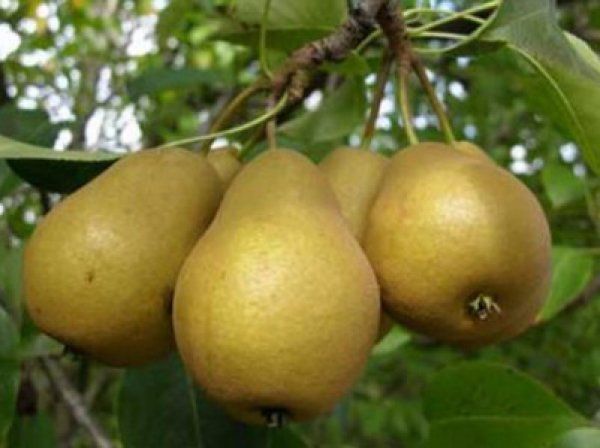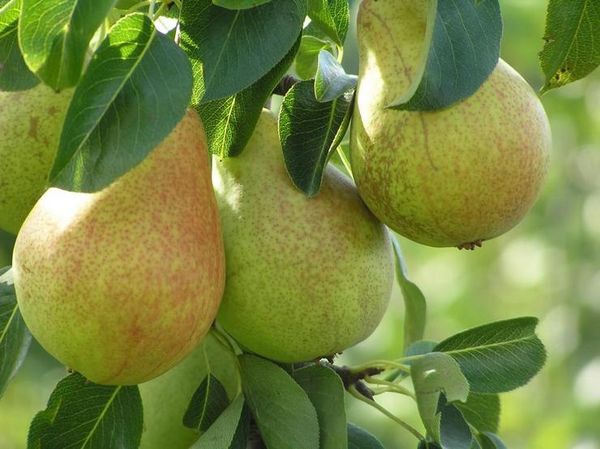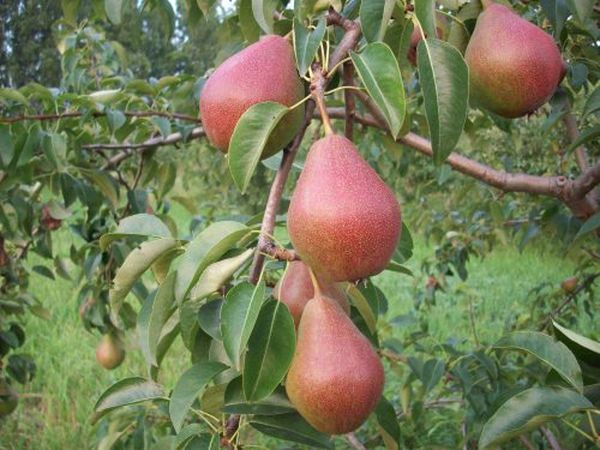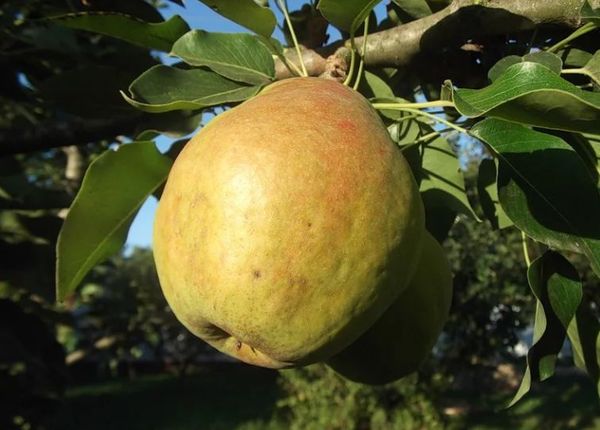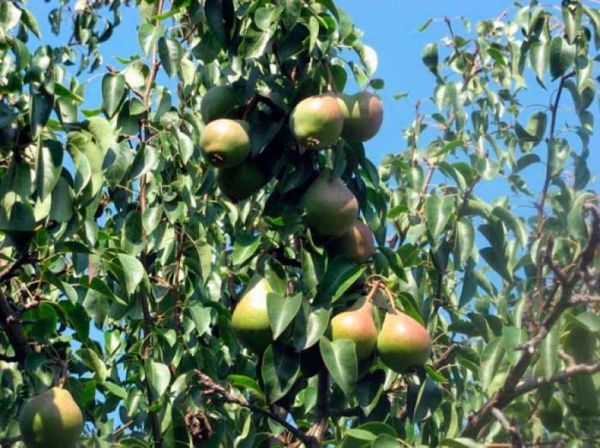10 best late varieties of pears: autumn and winter
Content
Features of late pears
Fruits on late varieties are the last to ripen. Surprisingly, they ripen right on the tree. You need to be very careful, as you should not remove the pears unripe, while ripe fruits may crumble. Trees of late varieties have a dark red bark and are demanding on the planting site.
Video "Instructions for planting pears"
In this video, you will learn how to properly plant a pear tree in the garden.
Main advantages
The main advantage of the late varieties is that the fruit can be stored for a very long time. This allows delicious pears to be eaten even in April. The main thing is to store it correctly.
Store fruits at low temperatures in well-ventilated areas. Hard fruits are removed from the trees during harvest. However, do not worry, as they acquire their maturity and unrivaled taste during storage.
One of the important advantages is its excellent portability. This makes late-ripening domestic pear varieties attractive for industrial cultivation. The advantages include frost resistance and versatility. The fruits make excellent preparations for the winter. Compotes and dried fruits replenish the vitamin reserve in winter.
According to gardeners' reviews, the only drawback of late varieties is that the fruit will have to wait for a long time.
Features of agricultural technology
Autumn and winter varieties of pears are demanding on planting sites and soil. You can not plant this fruit crop in places where the wind blows. Cold winds cause the buds to freeze and crops will be scarce. Pears ripen well on trees planted in places where there is an abundance of sun.
You should also check the groundwater level. If they are located close to the surface, then in winter the trees can freeze out, and in the spring they can be flooded. To prevent the root system from rotting, you need to equip the planting pit with drainage.
Autumn varieties
Velesa is the variety topping the list of the best. Fruits ripen in early September. After planting, the fruit crop begins to bear fruit in 5–7 years. One tree can be harvested about 100 kg. Large pears with excellent taste can be eaten straight from the branch. They can be stored at low temperatures until the New Years. Do not keep fruits on the tree until fully ripe, as they become very attractive to wasps and unsuitable for storage. The fruit culture is resistant to frost and various diseases. The disadvantage of the variety is the reduction in the size of pears with a rich harvest.
The Thumbelina variety also matures in September. Fruiting begins in 6-7 years. Up to 90 kg are harvested from one tree. Under favorable conditions, the shelf life can reach up to six months. The fruits are yellowish brown in color, juicy and sweet. One of the disadvantages of the variety is small pears, but this disadvantage is compensated by the excellent taste.
Saratovka is a medium-sized fruit tree. The first pears appear in the fifth year. Collect greenish-yellow fruits in late September.During storage, they gain flavor and acquire a golden color. Fruits weighing up to 150 g have tender and juicy pulp, they practically melt in the mouth. The culture is winter-hardy, fruits are stored in basements for up to 5 months.
Red-sided pear has fruits covered with oily skin. They are yellow-green in color with bright crimson sides. The fruit culture tolerates cold weather and is immune to disease. Fruit should be harvested at the end of September, delay will cause the crop to crumble.
Pear Bere Bosc has large fruits weighing up to 180 g, although pears weighing 250 g are often found. They have a bottle-shaped, slightly elongated shape. Yellowish brown pears are very juicy and have a sweet taste with an almond and spicy aftertaste.
Winter varieties
Pear Bere Ardanpon also has great fruits. In the dense pyramidal crown are greenish bell-shaped pears. As they ripen, the pears turn yellow with ruddy casks and decorated with brown "freckles". The delicate and juicy white inside has a sweet taste, flavored with a little sourness. The tree is planted in places where underground waters are deep enough.
Pear Kuban late - a low tree with an "irregular" crown. Medium-sized fruits are regular in shape with tubercles. Greenish fruits appear on the tree, which are "kissed" in the barrel by the sun. When ripe, pears acquire a yellow color, sweet and sour taste with a pleasant taste.
Pervomaiskaya ripens in the last days of September. The seedlings are resistant to low temperatures and require minimal maintenance. Large yellow fruits with bright and ruddy sides have an oily skin with a thin waxy coating. The taste is multifaceted and harmonious. Pleasant sweetness is refreshed by sourness and slight astringency.
Malyaevskaya late - a tall tree with a lush crown. Fruits are yellow in color, most of which are covered with blush. The juicy, creamy interior of the fruit has a coarse-grained structure and has a sweet astringent taste and pronounced acidity.
The Nika pear has medium-sized fruits, but there are trees on which pears weighing 200 g grow. They are covered with an oily skin. During harvesting, the greenish fruits are removed from the trees. After they lie down for a bit, the pears turn yellow with ruddy barrels. They have excellent taste with nutmeg aroma. The variety is winter hardy. Fruits in fruit storage can retain their appearance and taste for up to 4 months.



